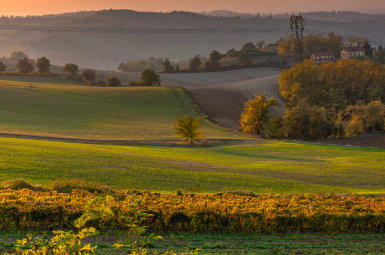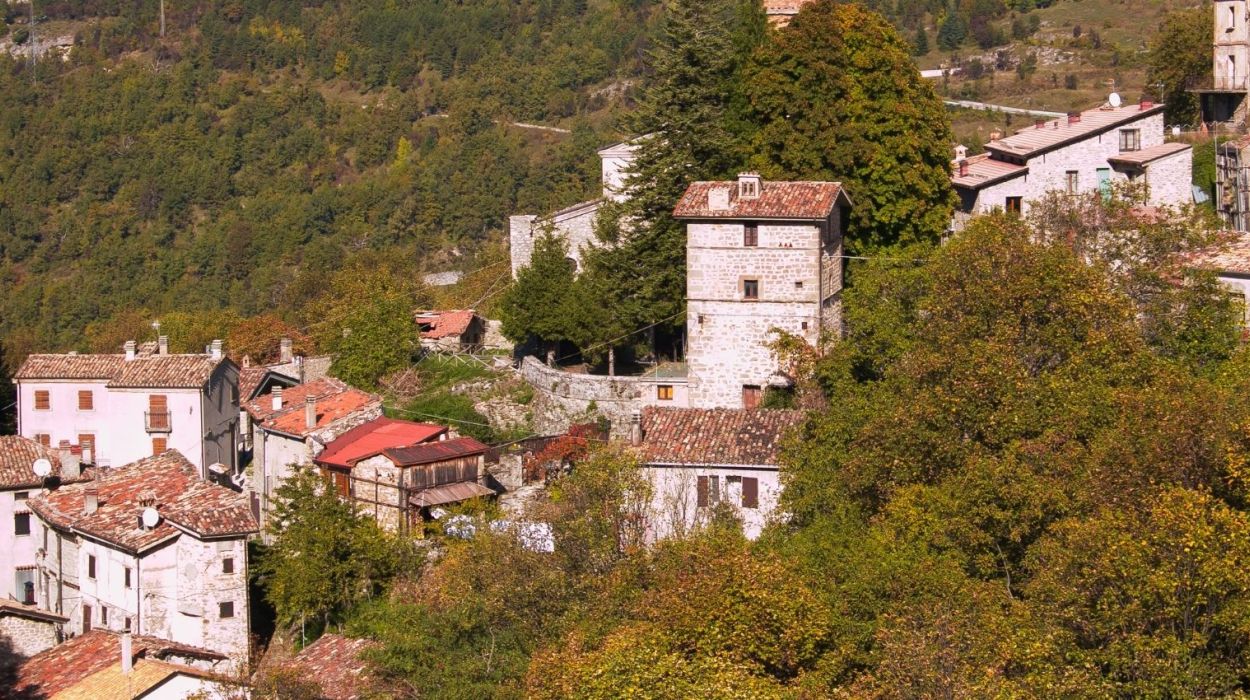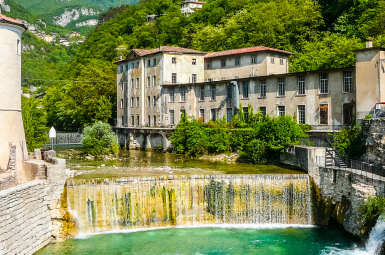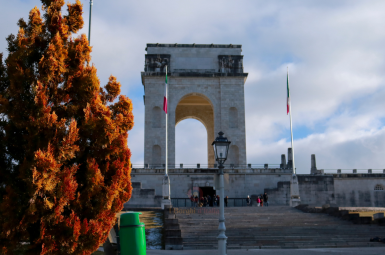
Pietracamela
Il Borgo di Pietracamela
Pietracamela: Il Nido d’Aquila tra le Pareti del Gran Sasso
Pietracamela (TE) non è un semplice paese: è un’ode alla montagna, un borgo aggrappato alla roccia a 1005 metri d’altitudine, dove la pietra scolpita e il silenzio regnano incontrastati. Incastonato nel cuore del Parco Nazionale del Gran Sasso e Monti della Laga, è la porta d’accesso alle vette più maestose dell’Appennino, un gioiello medievale dove l’avventura si fonde con la storia autentica. Se sogni l’emozione della vetta e il fascino di un borgo fuori dal tempo, Pietracamela è il tuo campo base.Architettura e Identità: La Casa Scritta nella Roccia
Pietracamela è l’unico comune della provincia di Teramo interamente compreso nel parco nazionale, e questa connessione con la natura selvaggia è visibile in ogni dettaglio.- Il Borgo di Pietra: Passeggiare nel centro storico è un’immersione nel Medioevo. Le case sono costruite con la pietra locale, addossate l’una all’altra e spesso unite da “sporti” (archi di passaggio) che creano un dedalo di vicoli stretti e suggestivi. Le antiche architravi recano incisioni con date o simboli che raccontano la vita e i mestieri dei suoi abitanti (pastori e artigiani).
- Il Mistero del Cammello: Una delle curiosità più affascinanti è legata al suo nome: Pietracamela. Sebbene l’etimologia sia dibattuta (da Camerii o Cacumen), lo stemma comunale raffigura un cammello, un riferimento leggendario al profilo montano che assomiglia alle gobbe dell’animale, aggiungendo un tocco di esotismo a questo nido alpino.
Il Paradiso degli Alpinisti: Corno Piccolo e Prati di Tivo
Pietracamela è la base strategica per chi vive la montagna in modo attivo, offrendo accesso diretto ad alcune delle aree più spettacolari del Gran Sasso.- La Porta della Vetta: Dal borgo si raggiunge in breve la frazione di Prati di Tivo (1450 m), il centro turistico invernale ed estivo per eccellenza. Da qui partono i sentieri che conducono a rifugi storici come il Rifugio Carlo Franchetti e si aprono le vie per l’ascesa al Corno Piccolo e al Corno Grande, la vetta più alta degli Appennini.
- Natura a Tutta Quota: L’area circostante offre percorsi per l’escursionismo, il trekking e, d’inverno, lo sci. Gli amanti della natura possono esplorare le sorgenti del Rio Arno e godere di panorami mozzafiato sul massiccio montuoso, in un contesto di faggi secolari e camosci che pascolano in libertà.
Tesori Silenziosi: Fede e Tradizione
Nonostante le dimensioni ridotte, Pietracamela custodisce chiese storiche che testimoniano una profonda devozione.- Le Chiese del Borgo: La Chiesa di San Giovanni Battista e la Chiesa di San Leucio (patrono del paese) sono i punti focali della vita comunitaria e religiosa, con strutture in pietra che si integrano perfettamente nel paesaggio.
- L’Anima Alpina: Il borgo celebra la sua identità montana anche con eventi tradizionali sentiti, e conserva una cucina che esalta i sapori forti e genuini, come i piatti a base di agnello, spezzatino di capra e formaggi di pecora locali.

Il Borgo d’Italia
tutto da scoprire ed esplorare
Monumenti
Pietracamela: L’Arte di Vivere alle Pendici del Gigante
Pietracamela (TE) non espone i suoi monumenti in piazza; li intreccia direttamente con la roccia del Gran Sasso. In questo borgo, il vero monumento è l’armonia perfetta tra l’ingegno umano e la natura selvaggia. Le architetture non sono solo opere d’arte, ma testimonianze della resilienza e della profonda spiritualità di chi ha scelto di vivere a oltre 1000 metri di altitudine.
Qui, la storia è scolpita nella pietra, e ogni vicolo racconta secoli di vita montana.
Il Centro Storico: Un Monumento Diffuso in Pietra
L’intero borgo, annoverato tra “I Borghi più Belli d’Italia,” è la sua opera più grande, un capolavoro di architettura spontanea.
- L’Architettura Nuda: L’edilizia è dominata dalla pietra locale e da un impianto medievale perfettamente conservato. Le case si aggrappano le une alle altre, quasi in un abbraccio protettivo, con tetti ripidi e facciate essenziali. È l’apice dello stile montano abruzzese.
- Vicoli e “Sporti”: Il percorso all’interno del centro è un labirinto di stradine in salita e a gradinata. Osserva gli “sporti”, gli archi che uniscono i piani superiori delle case, creando passaggi coperti che sembrano tunnel nel tempo.
- Gli Architravi Parlanti: Fai attenzione ai portali d’ingresso: molti conservano incisioni su pietra con stemmi gentilizi, date antiche o simboli dei mestieri, vere e proprie firme lasciate dai maestri scalpellini locali. La “Casa Signoretti” ne è un notevole esempio.
Fede e Devozione: Le Chiese in un Paesaggio Maestoso
I luoghi di culto riflettono la sobrietà e la forza spirituale della comunità alpina.
- Chiesa di San Giovanni Battista: Risalente al XV secolo, è uno degli edifici più antichi e significativi. La sua struttura in pietra si integra perfettamente con l’ambiente roccioso. All’interno, pur nella semplicità, si conservano arredi e opere d’arte che testimoniano la devozione locale.
- Chiesa di San Leucio: Dedicata al Santo Patrono, questa chiesa è un punto di riferimento per la comunità. I suoi esterni, pur modesti, contrastano con la ricchezza barocca degli altari in legno e delle tele conservate all’interno, frutto di un artigianato d’eccellenza.
Il Monumento Naturale: Prati di Tivo e le Vette
La vera grandezza monumentale di Pietracamela risiede nel suo contesto, che funge da skyline imponente per il borgo.
- Porta del Gran Sasso: A pochi chilometri, la frazione di Prati di Tivo è un monumento al turismo alpino. È la base da cui partono gli itinerari escursionistici e alpinistici verso il Corno Piccolo e il Rifugio Franchetti, luoghi che rappresentano l’apice del paesaggio Appenninico.
- Il Belvedere: Dal borgo, il panorama si apre sul massiccio del Gran Sasso, un’esperienza visiva che incornicia il paese in una cornice di roccia e cielo.
A Pietracamela, non c’è bisogno di sontuosi palazzi per celebrare la bellezza. Il monumento è il borgo stesso: intatto, autentico e perennemente in dialogo con la montagna.
Curiosità
Pietracamela: Storie, Leggende e L’Anima Selvaggia del Gran Sasso
Pietracamela (TE) non è solo un borgo di pietra; è un atlante di storie scolpite tra le rocce, un luogo dove la natura selvaggia del Gran Sasso ha forgiato un’identità unica. Qui, ogni vicolo, ogni panorama e persino il nome stesso, nascondono aneddoti affascinanti che la rendono una delle gemme più autentiche d’Abruzzo.
Preparati a scoprire le curiosità che fanno di questo “Nido d’Aquila” una meta indimenticabile.
La Curiosità Etimologica: Il Mistero del Cammello
Il nome del borgo nasconde un’origine enigmatica che sfida le logiche montane.
- Pietra e Cammello: L’etimologia popolare fa riferimento alla “pietra” su cui il paese è arroccato e, sorprendentemente, alla parola “camela” o “camelus”. Come può un cammello finire nel cuore dell’Appennino?
- La Leggenda Visiva: L’ipotesi più affascinante, e quella a cui si rifà anche lo stemma comunale, vuole che il profilo di una delle vette del Gran Sasso che si staglia dietro il paese richiami la forma di una doppia gobba di cammello. Una vera e propria illusione ottica che lega il borgo a un animale esotico, rendendolo unico nel panorama montano.
Un Borgo Nascosto: L’Architettura di Sopravvivenza
L’impianto urbano di Pietracamela è la prima, grande curiosità, frutto di secoli di adattamento.
- Il Nido Roccaforte: Il borgo si sviluppò nel Medioevo come rifugio per popolazioni che cercavano protezione in luoghi inaccessibili, spesso fuggendo dalle invasioni. Il risultato è una struttura compatta, quasi blindata, dove le case in pietra sono letteralmente addossate le une alle altre e alla montagna.
- Gli “Sporti” (o Archi): Camminando nei vicoli, noterai gli archi che uniscono i piani superiori delle case attraverso la strada. Queste strutture, chiamate localmente “sporti”, non sono solo elementi architettonici affascinanti, ma servivano anticamente sia come rinforzo statico contro i terremoti che come vie di collegamento e difesa interne.
Il Cuore Sportivo: Porta d’Accesso al Gigante
La posizione di Pietracamela è la sua vera vocazione, che la lega indissolubilmente all’alpinismo.
- Il Campo Base Storico: Il borgo, insieme alla sua frazione Prati di Tivo, è la porta privilegiata per le escursioni e le ascensioni sul massiccio del Gran Sasso. È da qui che storicamente partono molte delle vie che conducono al Corno Piccolo e ai rifugi più emblematici, come il Rifugio Carlo Franchetti.
- La Montagna Vivente: Il territorio di Pietracamela rientra nell’area protetta del Parco Nazionale del Gran Sasso e Monti della Laga, rendendola un punto focale per l’osservazione della fauna selvatica, in particolare del Camoscio d’Abruzzo, che spesso si può scorgere nelle alture sovrastanti.
Pietracamela ti aspetta per svelarti i suoi segreti, dove il silenzio della pietra è interrotto solo dall’eco delle leggende. Quale angolo del borgo andresti a esplorare per primo?
Personaggi
La Stirpe della Pietra: I Nomi che Hanno Scalato il Tempo a Pietracamela
Pietracamela non ha dato i natali a re o regine, ma a figure forgiate dalla tempra unica della montagna, uomini e donne che hanno lasciato un segno indelebile nell’alpinismo, nell’arte e nella storia locale. Qui, la fama si guadagna tra le rocce e la cultura è intessuta con i fili della tradizione più autentica.
Ecco i personaggi che incarnano lo spirito fiero e resiliente di questo borgo abruzzese.
Lino D’Angelo: La Leggenda Vivente del Gran Sasso
Se Pietracamela è la porta del Gran Sasso, Lino D’Angelo (1921-2016) ne è stato il guardiano e il pioniere.
- Il Simbolo dell’Alpinismo: D’Angelo è stato una delle più grandi Guide Alpine Emerite della storia italiana, dedicando oltre 65 anni della sua vita a quelle vette. Ha aperto alcune delle vie più estreme e impegnative sul Corno Piccolo e sul Corno Grande, spesso con equipaggiamenti rudimentali che oggi sembrano impensabili.
- Il Monolito e Oltre: La sua impresa più celebre include la prima scalata del Monolito del Corno Piccolo e l’apertura dello “Spigolo delle Guide”. D’Angelo è considerato il simbolo vivente dell’alpinismo sul Gran Sasso, un uomo che ha toccato il cielo con un dito, come amava ricordare, accarezzando le sue rocce fino all’età di 77 anni, la sua ultima salita.
Gli “Aquilotti del Gran Sasso”: Un Movimento Storico
Pietracamela è la vera culla dell’alpinismo organizzato in Italia, un primato spesso sottovalutato.
- La Nascita di un Mito: Il borgo diede i natali agli “Aquilotti del Gran Sasso”, fondato nel 1925 da Ernesto Sivitilli. Questo fu il primo gruppo alpinistico locale ufficiale in Italia, un precursore di movimenti più celebri come gli “Scoiattoli di Cortina” e i “Ragni di Lecco”.
- Eredità e Passione: Gli Aquilotti, con le loro gesta audaci, hanno tracciato le rotte sulle pareti più inospitali del Gran Sasso, infondendo nel borgo una tradizione di montagna che continua ad ardere con una nuova generazione di scalatori.
Guido Montauti: L’Arte Oltre la Montagna
Il talento di Pietracamela non si è limitato solo alle verticalità delle rocce, ma si è espresso anche nell’arte.
- Il Pittore e il Pastore Bianco: Guido Montauti (1918-1979), pur avendo vissuto e lavorato a lungo a Parigi, era originario di Pietracamela. Pittore noto e apprezzato, è stato il fondatore della corrente artistica del “Pastore Bianco”, un movimento che rifletteva un’estetica semplice, essenziale e carica della spiritualità della sua terra d’origine.
- Intellettuali e Patrioti: La storia del borgo vanta anche figure come Antonio Dionisi (1866-1931), stimato medico e professore universitario, e Bernardo De Michelis, patriota che partecipò ai moti carbonari, dimostrando che il carattere indomito dei suoi abitanti si manifestava sia in montagna che nella vita civile.
Pietracamela è un luogo di eroi silenziosi. Vuoi scoprire in quale museo locale sono conservati i cimeli e le storie di questi personaggi illustri?
Ricette Tipiche
Sapori d’Alta Quota: La Cucina Resistente di Pietracamela
A Pietracamela, la cucina non è un semplice atto culinario: è la celebrazione della resistenza, della pastorizia e della necessità di riscaldare l’anima tra le rocce del Gran Sasso. Le ricette sono figlie della montagna: genuine, ricche di gusto e profondamente legate ai sapori della transumanza e dei prodotti caseari d’eccellenza. Preparatevi a un’esperienza gastronomica che è pura energia alpina.
Ecco i capolavori che hanno reso celebre il gusto del borgo:
La Pasta della Tradizione: I Ravioli alla Pietracamela
Non un semplice primo piatto, ma la quinta essenza del sapore montano. Questi ravioli rappresentano il piatto tipico più originale e celebrato del paese.
- Il Cuore del Sapore: La vera magia sta nel ripieno. Dimentica la ricotta, qui il ripieno è a base di carne ovina (spesso pecora o agnello), che conferisce un gusto intenso e rustico, tipico delle produzioni locali.
- Il Condimento Essenziale: Tradizionalmente vengono serviti con un semplice ma robusto sugo di ragù d’agnello o pecora, oppure in bianco con burro fuso e un’abbondante spolverata di pecorino d’Abruzzo, che ne esalta il carattere deciso. Un piatto che onora il legame indissolubile con la pastorizia.
L’Omaggio alla Lana: Gli Arrosticini e lo Spezzatino
La carne ovina e caprina sono le regine indiscusse della tavola, emblemi della vita del pastore.
- Gli Arrosticini: Simbolo dell’Abruzzo intero, qui, alle pendici del Gran Sasso, raggiungono la massima espressione. Cubetti di carne di pecora infilzati su uno spiedo e cotti alla brace. Sono un rito, l’essenza del fast food tradizionale e genuino, da gustare rigorosamente con le mani e accompagnati da pane unto d’olio locale.
- Lo Spezzatino di Capra: Un piatto di lunga cottura, ideale per le fredde serate di montagna. La carne di capra, sapientemente cucinata in umido con aromi, erbe selvatiche e un tocco di peperoncino, risulta tenera e succulenta. Un vero confort food che necessita di pazienza, ma ripaga ogni attesa.
I Tesori Caseari e gli “Starter” Abruzzesi
La tradizione casearia locale, frutto dei pascoli incontaminati del Gran Sasso, offre sapori unici che non possono mancare.
- Cacio Marcetto: Per i palati forti e audaci, il formaggio marcetto o cacio marcio è una specialità abruzzese dal gusto pungente e dalla consistenza cremosa, spesso utilizzato come antipasto spalmato sul pane, o per insaporire piatti robusti.
- Le Scripelle ‘Mbusse: Una coccola calda, perfetta per iniziare un pasto o riscaldarsi. Sono sottili crespelle arrotolate (simili alle crêpes), spolverate di parmigiano o pecorino e immerse in un brodo di carne bollente. La loro semplicità nasconde un sapore avvolgente e confortante.
Pietracamela ti aspetta per un viaggio di gusto che è un atto d’amore verso la terra e i suoi prodotti. Quale di questi sapori rustici assaggeresti per primo?


